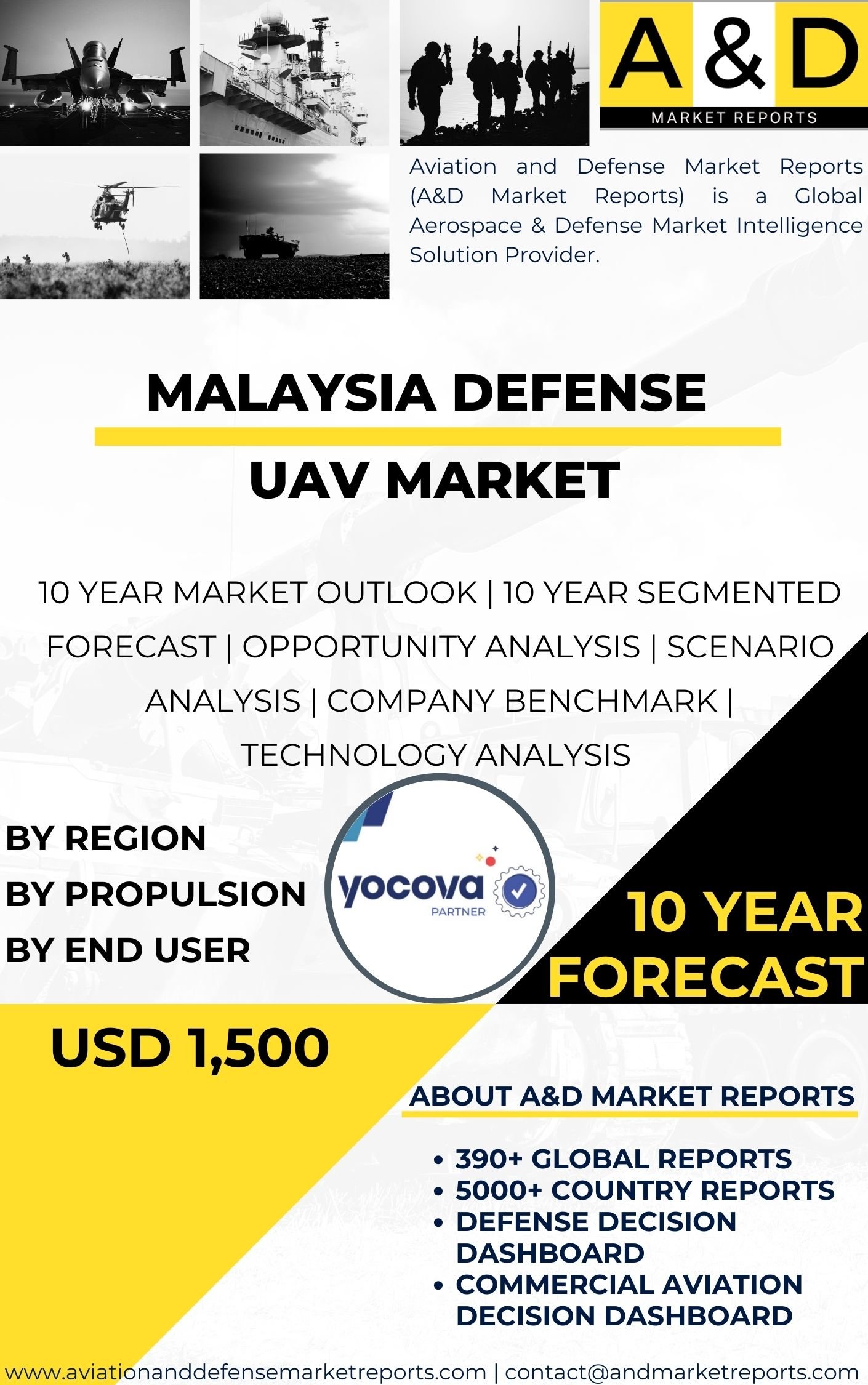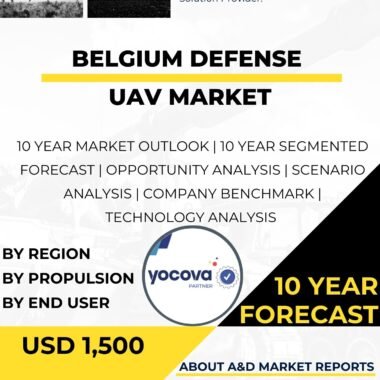Description
Malaysia defense UAV market has grown rapidly in recent years, driven by the country’s efforts to modernize its military capabilities and respond to evolving security challenges. As a strategically positioned nation in Southeast Asia, Malaysia recognizes the importance of adopting advanced UAV systems to strengthen intelligence, surveillance, reconnaissance (ISR), combat support, and disaster management operations across its defense forces.
Malaysia Defense UAV Market: Drivers of Growth
One of the key drivers of the UAV market is Malaysia’s commitment to military modernization. UAVs provide real-time intelligence and improved situational awareness, allowing commanders to make informed decisions without risking the lives of personnel. This capability is especially valuable in complex environments where rapid information gathering is essential for effective mission execution.
The Malaysian Armed Forces have adopted UAVs across multiple branches. The Army relies on UAVs for reconnaissance, border monitoring, and counterinsurgency support. The Navy uses UAVs to enhance maritime domain awareness and conduct patrol operations. The Air Force deploys UAVs for aerial surveillance, target tracking, and combat support, strengthening air-based ISR capabilities.
Malaysia Defense UAV Market: Humanitarian and Disaster Response
Malaysia has also expanded UAV use beyond defense applications. During natural disasters, UAVs equipped with thermal sensors and high-resolution cameras help assess damage, identify hazards, and support search-and-rescue missions. Their ability to cover large areas quickly makes them essential tools for disaster response agencies and humanitarian operations.
Malaysia Defense UAV Market: International and Domestic Collaboration
International partnerships have been instrumental in advancing Malaysia’s UAV capabilities. The government has collaborated with major global defense companies to acquire advanced UAV systems, gain operational expertise, and strengthen technology transfer efforts. These alliances support training, maintenance, and system integration while improving Malaysia’s long-term self-reliance.
At the same time, cooperation between the defense sector and domestic research institutions has fostered indigenous UAV development. Malaysia continues to invest in local manufacturing and R&D programs to build homegrown UAV platforms, strengthen the defense industrial base, and reduce dependence on foreign suppliers.
Malaysia Defense UAV Market: Technology Advancements
Technological improvements in UAV design—such as miniaturization, longer endurance, improved connectivity, and increased payload capacity—have expanded their operational value. These advancements enable Malaysia to deploy UAVs for a wide spectrum of missions, ranging from short-range tactical reconnaissance to extended-duration surveillance operations supporting homeland security and regional defense commitments.
Malaysia Defense UAV Market: Challenges
Despite strong growth, the UAV market faces several challenges. Budget limitations may influence acquisition plans and slow the pace of domestic R&D programs. As UAV technology evolves rapidly, continuous investment is needed to ensure Malaysia maintains operational relevance and keeps pace with global advancements.
Airspace integration presents another challenge. Coordinating UAV operations alongside civilian air traffic requires close collaboration between defense authorities and civil aviation regulators to ensure safe, secure, and regulated UAV activity.
Cybersecurity remains a pressing concern. As UAVs rely heavily on digital networks, satellite links, and remote-control systems, they are vulnerable to cyberattacks, signal interference, and data breaches. Protecting communication channels and safeguarding sensitive military information are essential priorities.
Malaysia Defense UAV Market: Future Outlook
The future of the defense UAV market in Malaysia appears highly promising. Strong government investment, coupled with rapid technological innovation, will continue to drive market expansion. Growing demand for ISR, border security, counterterrorism support, and disaster response will further accelerate UAV adoption across defense and civilian sectors.
Malaysia’s participation in regional security cooperation, peacekeeping missions, and multilateral defense initiatives will also shape future UAV requirements, especially for long-range surveillance and joint-operations support.
Conclusion
In summary, the defense UAV market in Malaysia has achieved significant progress, supported by modernization programs, strong international partnerships, and growing domestic R&D capabilities. UAVs have enhanced Malaysia’s military effectiveness, improved disaster response capacity, and strengthened national security. To sustain long-term growth, Malaysia must continue addressing challenges related to funding, airspace management, and cybersecurity while investing in advanced technologies that support future operational needs.




